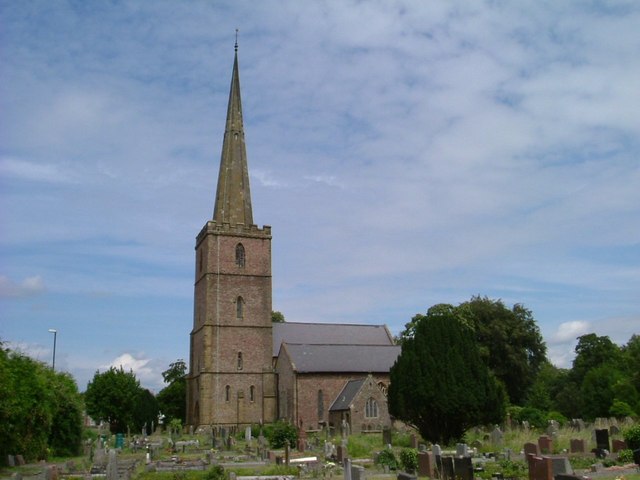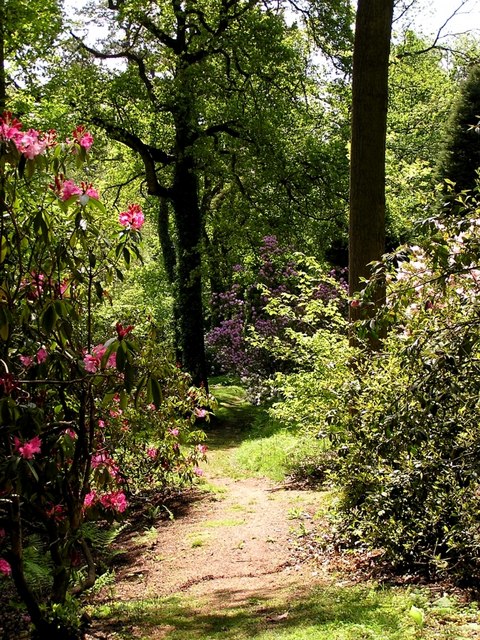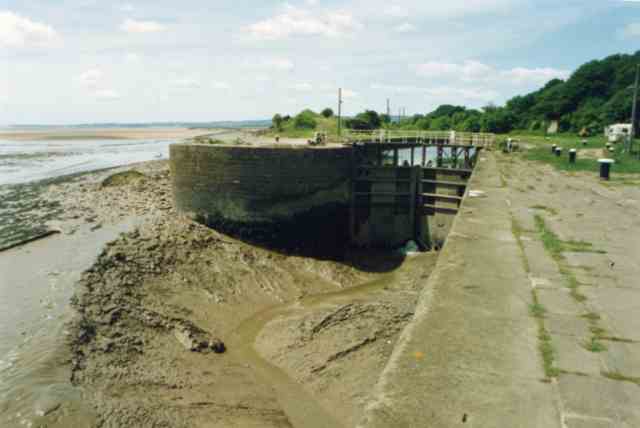|
Lydney
Lydney is a town and civil parish in Gloucestershire, England. It is on the west bank of the River Severn in the Forest of Dean District, and is 16 miles (25 km) southwest of Gloucester. The town has been bypassed by the A48 road since 1995. The population was about 8,960 in the 2001 census, reducing to 8,766 at the 2011 census. Increasing to 10,043 at the 2021 Census. Lydney has a harbour on the Severn, created when the Lydney Canal was built. Adjoining the town, Lydney Park gardens have a Roman temple dedicated to Nodens. Etymology According to Cook (1906) the toponym "Lydney" derives from the Old English *''Lydan-eġ'', " Lludd's Island", which could connect it with the name Nudd/Nodens. However, alternative etymologies of Lydney are offered in other sources. A. D. Mills suggests "island or river-meadow of the sailor, or of a man named *Lida", citing the forms "Lideneg" from c. 853 and "Ledenei" from the 1086 Domesday Book. History In the Iron Age a promontory fort ... [...More Info...] [...Related Items...] OR: [Wikipedia] [Google] [Baidu] |
Lydney Church
Lydney is a town and civil parish in Gloucestershire, England. It is on the west bank of the River Severn in the Forest of Dean District, and is 16 miles (25 km) southwest of Gloucester. The town has been bypassed by the A48 road since 1995. The population was about 8,960 in the 2001 census, reducing to 8,766 at the 2011 census. Increasing to 10,043 at the 2021 Census. Lydney has a harbour on the Severn, created when the Lydney Canal was built. Adjoining the town, Lydney Park gardens have a Roman temple dedicated to Nodens. Etymology According to Cook (1906) the toponym "Lydney" derives from the Old English *''Lydan-eġ'', "Lludd's Island", which could connect it with the name Nudd/Nodens. However, alternative etymologies of Lydney are offered in other sources. A. D. Mills suggests "island or river-meadow of the sailor, or of a man named *Lida", citing the forms "Lideneg" from c. 853 and "Ledenei" from the 1086 Domesday Book. History In the Iron Age a promontory fort w ... [...More Info...] [...Related Items...] OR: [Wikipedia] [Google] [Baidu] |
Lydney Park
Lydney Park is a 17th-century country estate surrounding Lydney House, located at Lydney in the Forest of Dean district in Gloucestershire, England. It is known for its gardens and Roman temple complex. House and gardens Lydney Park was bought in 1719 by Benjamin Bathurst, son of the Cofferer of the Household to Queen Anne, and has remained in the family since then. The original house was close to the main road, with a large deer park behind it which was previously part of the estate of White Cross Manor. In 1875, Rev. William Hiley Bathurst built a new house in the centre of the deer park, with views over the River Severn. The new house was built by C. H. Howell, with a formal garden and shrubberies. The old house was demolished, apart from the buildings now occupied by the Taurus Crafts centre. Rev. Bathurst's grandson Charles, later Viscount Bledisloe, made some further changes to the garden before the house became used in the Second World War, first to ho ... [...More Info...] [...Related Items...] OR: [Wikipedia] [Google] [Baidu] |
Lydney Town Hall
Lydney Town Hall is a municipal structure in the High Street, Lydney, Gloucestershire, England. The structure, which is used as an events venue, is listed by the local authority as a "building of local architectural or historical interest". History In the 1880s, following significant population growth associated with the town's role as a port for the shipment of coal and timber, a group of local businessmen decided to form a company to finance and to erect a town hall. The land selected for the new building, which was to the immediate south of the market cross, was donated by the lord of the manor, Charles Bathurst (1837–1907) of Lydney Park. The foundation stone for the new building was laid by the benefactor's son, Charles Bathurst (1867–1958), on 15 December 1888. It was designed by William Howard Seth-Smith in the Jacobethan style, built in rubble masonry and was officially opened by the benefactor's daughter, Mary Bathhurst, in September 1889. The design involved a sy ... [...More Info...] [...Related Items...] OR: [Wikipedia] [Google] [Baidu] |
Lydney Town Hall (geograph 5131199)
Lydney Town Hall is a municipal structure in the High Street, Lydney, Gloucestershire, England. The structure, which is used as an events venue, is listed by the local authority as a "building of local architectural or historical interest". History In the 1880s, following significant population growth associated with the town's role as a port for the shipment of coal and timber, a group of local businessmen decided to form a company to finance and to erect a town hall. The land selected for the new building, which was to the immediate south of the market cross, was donated by the lord of the manor, Charles Bathurst (1837–1907) of Lydney Park. The foundation stone for the new building was laid by the benefactor's son, Charles Bathurst (1867–1958), on 15 December 1888. It was designed by William Howard Seth-Smith in the Jacobethan style, built in rubble masonry and was officially opened by the benefactor's daughter, Mary Bathhurst, in September 1889. The design involved a sy ... [...More Info...] [...Related Items...] OR: [Wikipedia] [Google] [Baidu] |
River Lyd (Gloucestershire)
The Lydney Canal is a one-mile canal in Gloucestershire that runs inland from the River Severn to Lydney. It was opened in 1813 to trans-ship iron and coal from the Forest of Dean. It was once connected by a horse-drawn tramroad to Pidcock's Canal which brought materials down to the wharves by tub-boat. In the 1960s imported wood was still being brought in by barge from Avonmouth. It remained in commercial use until the 1980s. The entrance to the canal consists of an outer tidal gate opening into a wide basin. From there a lock opens into the one-mile canal cut. Immediately above the lock, a pair of gates points the other way as protection against a high tidal flood in the estuary. There is one swing bridge across the canal. The docks were restored between 2003 and 2005, using money from the Heritage Lottery Fund and others, to create a marina and harbour area for seagoing yachts and motor boats. In 2015 the outer lock gates failed in the open position and are inoperable ... [...More Info...] [...Related Items...] OR: [Wikipedia] [Google] [Baidu] |
Lydney Canal
The Lydney Canal is a one-mile canal in Gloucestershire that runs inland from the River Severn to Lydney. It was opened in 1813 to trans-ship iron and coal from the Forest of Dean. It was once connected by a horse-drawn tramroad to Pidcock's Canal which brought materials down to the wharves by tub-boat. In the 1960s imported wood was still being brought in by barge from Avonmouth. It remained in commercial use until the 1980s. The entrance to the canal consists of an outer tidal gate opening into a wide basin. From there a lock opens into the one-mile canal cut. Immediately above the lock, a pair of gates points the other way as protection against a high tidal flood in the estuary. There is one swing bridge across the canal. The docks were restored between 2003 and 2005, using money from the Heritage Lottery Fund and others, to create a marina and harbour area for seagoing yachts and motor boats. In 2015 the outer lock gates failed in the open position and are inoperable ... [...More Info...] [...Related Items...] OR: [Wikipedia] [Google] [Baidu] |
Nodens
*''Nodens'' or *''Nodons'' ( reconstructed from the dative ''Nodenti'' or ''Nodonti'') is a Celtic healing god worshipped in Ancient Britain. Although no physical depiction of him has survived, votive plaques found in a shrine at Lydney Park (Gloucester) indicate his connection with dogs, a beast associated with healing symbolism in antiquity. The deity is known in only one other location, in Cockersand Moss (Lancashire). He was equated on most inscriptions with the Roman god Mars (as a healer rather than as a warrior) and likened to Silvanus (a hunting-god)., s.v. ''Nodons'', ''Nudd'' and ''Nuadu Airgetlám''. His name is cognate with that of later Celtic mythological figures, such as the Irish '' Nuada'' and the Welsh ''Nudd''.' The philologist and author J. R. R. Tolkien was invited to investigate the Latin inscription, and scholars have noted several likely influences on his Middle-earth fantasy writings, including the Elvish smith, maker of Rings of Power, Celebr ... [...More Info...] [...Related Items...] OR: [Wikipedia] [Google] [Baidu] |
River Severn
, name_etymology = , image = SevernFromCastleCB.JPG , image_size = 288 , image_caption = The river seen from Shrewsbury Castle , map = RiverSevernMap.jpg , map_size = 288 , map_caption = Tributaries (light blue) and major settlements on and near the Severn (bold blue) , pushpin_map = , pushpin_map_size = 288 , pushpin_map_caption= , subdivision_type1 = Country , subdivision_name1 = England and Wales , subdivision_type2 = , subdivision_name2 = , subdivision_type3 = Region , subdivision_name3 = Mid Wales, West Midlands, South West , subdivision_type4 = Counties , subdivision_name4 = Powys, Shropshire, Worcestershire, Gloucestershire , subdivision_type5 = Cities , subdivision_name5 = Shrewsbury, Worcester, Gloucester, Bristol , length = , width_min = , width_avg = , width_max = , depth_min = , depth_avg ... [...More Info...] [...Related Items...] OR: [Wikipedia] [Google] [Baidu] |
White Cross Manor
White Cross Manor was the manor house in Lydney, Gloucestershire, England, of the Wynter family. It was burnt to the ground in April 1645 on the orders of Sir John Wynter to avoid it being taken over by the Parliamentarians during the English Civil War The English Civil War (1642–1651) was a series of civil wars and political machinations between Parliamentarians ("Roundheads") and Royalists led by Charles I ("Cavaliers"), mainly over the manner of Kingdom of England, England's governanc .... White Cross Manor was where Edward Swarthye, a Black man, is recorded as whipping John Guye. Another manor house, Lydney House, was later built at the other end of its grounds. References Manor houses in England Buildings and structures demolished in the 17th century Houses in Gloucestershire {{Gloucestershire-struct-stub ... [...More Info...] [...Related Items...] OR: [Wikipedia] [Google] [Baidu] |
Viscount Bledisloe
Viscount Bledisloe, of Lydney in the County of Gloucestershire, is a title in the Peerage of the United Kingdom. It was created in 1935 for the Conservative politician Charles Bathurst, 1st Baron Bledisloe, upon his retirement as Governor-General of New Zealand. He had already been created Baron Bledisloe, of Lydney in the County of Gloucestershire, in 1918, also in the Peerage of the United Kingdom. Bathurst was the great-grandson and namesake of the early-19th-century politician Charles Bathurst. The latter was the son of Charles Bragge and Anne Bathurst, granddaughter of Sir Benjamin Bathurst, younger brother of Allen Bathurst, 1st Earl Bathurst. In 1804, Charles Bathurst assumed the surname of Bathurst in lieu of Bragge. The first Viscount's grandson, third Viscount, was one of the ninety elected hereditary peers that were allowed to remain in the House of Lords after the passing of the House of Lords Act 1999, and sat as a crossbencher until his death. He was also a member ... [...More Info...] [...Related Items...] OR: [Wikipedia] [Google] [Baidu] |
Forest Of Dean (UK Parliament Constituency)
Forest of Dean is a constituency in Gloucestershire represented in the House of Commons of the UK Parliament since 2005 by Mark Harper, a Conservative who has served as Secretary of State for Transport since 2022. Boundaries 1885–1918: The Sessional Divisions of Coleford, Lydney, Newent, and Newnham. 1918–1950: The Urban Districts of Awre, Coleford, Newnham, and Westbury-on-Severn, the Rural Districts of East Dean and United Parishes, Lydney, Newent, and West Dean, and part of the Rural District of Gloucester. 1997–2010: The District of Forest of Dean, and the Borough of Tewkesbury wards of Haw Bridge and Highnam. 2010–present: The District of Forest of Dean, and the Borough of Tewkesbury ward of Highnam with Haw Bridge. The constituency boundaries remained unchanged. History This seat was created for the 1885 general election (replacing the two-seat constituency of West Gloucestershire under the Redistribution of Seats Act 1885), was redrawn for the 1918 ge ... [...More Info...] [...Related Items...] OR: [Wikipedia] [Google] [Baidu] |
Gloucestershire
Gloucestershire ( abbreviated Glos) is a county in South West England. The county comprises part of the Cotswold Hills, part of the flat fertile valley of the River Severn and the entire Forest of Dean. The county town is the city of Gloucester and other principal towns and villages include Cheltenham, Cirencester, Kingswood, Bradley Stoke, Stroud, Thornbury, Yate, Tewkesbury, Bishop's Cleeve, Churchdown, Brockworth, Winchcombe, Dursley, Cam, Berkeley, Wotton-under-Edge, Tetbury, Moreton-in-Marsh, Fairford, Lechlade, Northleach, Stow-on-the-Wold, Chipping Campden, Bourton-on-the-Water, Stonehouse, Nailsworth, Minchinhampton, Painswick, Winterbourne, Frampton Cotterell, Coleford, Cinderford, Lydney and Rodborough and Cainscross that are within Stroud's urban area. Gloucestershire borders Herefordshire to the north-west, Worcestershire to the north, Warwickshire to the north-east, Oxfordshire to the east, Wiltshire to the south, Br ... [...More Info...] [...Related Items...] OR: [Wikipedia] [Google] [Baidu] |

.jpg)





